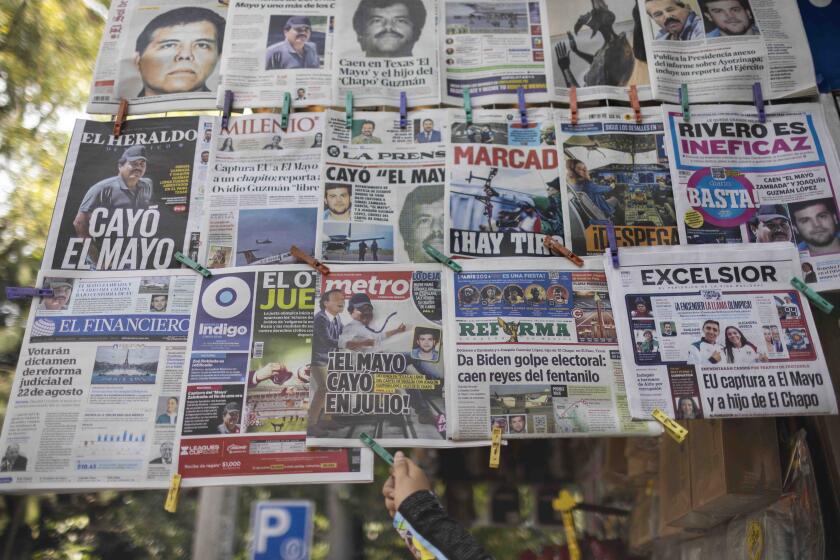A Historic Clash of Slavery, Liberty
In October 1795 an African named Joe, who was born a slave and died a slave, arrived here from Mount Vernon, Va. He accompanied the presidential coach of George Washington, who called him “Postilion Joe,” for Joe was a postilion, or footman.
Joe worked at the Robert Morris house, which served as the presidential residence during Philadelphia’s decade as the new nation’s capital. Many historians believe he slept in slave quarters behind the mansion, now known as President’s House.
Today, the place where Joe and Washington’s other slaves once worked and lived is a few feet from the entrance to a new building housing the Liberty Bell, which opened in October 2003 as part of the redesign of Independence National Historical Park.
The National Park Service spent $300 million on a decade-long project improving the park but did not provide a memorial for the slave quarters -- or, for that matter, the so-called first White House. The oversight outraged descendants of slaves, who formed the Avenging the Ancestors Coalition (ATAC -- pronounced “attack”). It also drew the ire of a crusading Philadelphia historian whose discovery of Postilion Joe, announced last month, has reignited the 2-year-old dispute.
Historian Edward Lawler Jr. has demanded a commemorative display to include an outline of the slave quarters marked in brick or stone. He accuses the Park Service of engaging in “machinations” to avoid addressing slavery.
“In order to enter the Liberty Bell Center, you can’t avoid stepping on the very place where Washington’s slaves were housed,” Lawler said. “More than a million people have walked right past without any indication that a slave quarters once stood there.”
The 45-acre park in downtown Philadelphia includes 19 historical structures, including Independence Hall, Congress Hall and the new National Constitution Center.
Michael Coard, an African American lawyer and ATAC leader, said the federal government has known for 25 years that Washington kept slaves at President’s House. “Yet they pretty much ignored the fact that there was slavery inside America’s first White House. It’s historical hypocrisy,” Coard said.
ATAC, Lawler and others have pressured the Park Service to formally commemorate the slave quarters and President’s House. Responding to complaints, park officials proposed in January 2003 a $4.5-million commemorative project that included an outline of President’s House but not one of the slave quarters.
That project, to be installed next to the Liberty Bell Center, has stalled because funding has not been approved by Congress, said park spokesman Phil Sheridan. The park redesign, which included moving the Liberty Bell to the new Liberty Bell Center, did provide for a snack bar, coffee bar and a large gift shop that sells patriotic tchotchkes.
The Liberty Bell Center is now left with what one historian calls “a conjunction of liberty and slavery on the same site” -- with only the liberty formally memorialized. Adding to the irony, the Pennsylvania statehouse bell was given its “liberty” name by abolitionists.
Sheridan said the Park Service failed to fully appreciate the significance of Washington’s slaves and residence. But during 18 public hearings over nearly five years in the mid-1990s, he said, no one requested a formal commemoration of either. There were requests to rebuild President’s House, but the Park Service stopped reconstructing historical sites in the 1980s, Sheridan said.
Coard said he was unaware that Washington kept slaves on the site until Lawler published a 157-page monograph in January 2002. He said that rallies, petitions and a letter-writing campaign forced the service to “go from denying to designing.” ATAC formed in 2002 in response to Lawler’s revelations.
Sheridan said the Park Service never denied the slaves’ presence, but merely failed to mention it prominently.
“I would say they [ATAC and Lawler] gave us an opportunity to help broaden the full story” of the President’s House, he said. “Are we a little late? Yes. But we have responded.”
Lawler said the Park Service’s failure to acknowledge President’s House spurred him in 1997 to research its history. That led him to new information about Washington’s slaves at a time when even some historians were unaware he had brought slaves to Philadelphia.
Lawler also discovered from Park Service records that the service knew about the slaves as early as the 1970s, but did not release the information to the public. (The Park Service website says the service “has long recognized the existence of ... the slaves in Washington’s household.”)
For years, the President’s House site was occupied by a public toilet that was removed last year. It wasn’t until the 1950s that the mansion was even officially acknowledged -- with a small marker on a wall outside the toilet. In 1984, Lawler said, the Park Service added a small interpretive marker nearby.
For the Park Service to fail to celebrate such an American institution “is just appalling,” Lawler said.
The mansion wasn’t just Washington’s residence, Lawler said. It was the executive seat of government, where Washington essentially invented the American presidency. He lived there from 1790 to 1797, calling it “the best single house in the city.” President John Adams lived there from 1797 to 1800.
The house burned in 1832, but two walls remained. They were torn down in 1951 to make way for the park, despite pleas from historians. A request by the American Institute of Architects to incorporate a footprint of the house into the park design was ignored, Lawler said.
Lawler’s research has kept the controversy alive while also highlighting uncomfortable footnotes to the official Washington hagiography:
* When Oney Judge, Martha Washington’s maidservant, escaped to New Hampshire in 1796, Washington ordered his Treasury secretary to find a way to have his wife’s “property” returned -- after Martha falsely claimed Judge had been abducted by a Frenchman. Judge had fled after Martha informed her that she was to be a wedding gift to Martha’s granddaughter.
* Under Pennsylvania’s 1780 Gradual Abolition Act, Washington risked losing his slaves (technically, six belonged to Martha) to freedom if he kept them in the state for more than six months. He made sure they were regularly moved out of the state, if only briefly.
* Inside the presidential mansion, Washington signed the Fugitive Slave Act of 1793, buttressing the rights of slave owners to recapture escaped slaves from other states.
Today, tourists walk across the President’s House site, where Lawler says a 1785 map shows plans for a two-room shed behind the mansion. According to Lawler, the shed was almost certainly built and was inhabited by several slaves. The Park Service, while acknowledging that slaves lived on the mansion grounds, says there is no incontrovertible proof that the slave shed existed.
“Until we have confirming evidence that the structure existed, we cannot mark it on the ground,” park Supt. Mary Bomar wrote to Lawler last year. She added: “We will note that the president had enslaved stable hands who worked in the stables where the Liberty Bell Center now stands.”
A sign at the Liberty Bell entrance reads, in part, “Coming ... exhibits about the house on this site, the early American Presidency
Inside, historical panels mention two of Washington’s “house slaves.” One features a copy of a Gilbert Stuart painting of Washington’s black cook. Lawler says the slaves of the mansion deserve much more.
“Slavery is permanently stamped on this tiny piece of real estate,” he wrote on the website of the nonprofit Independence Hall Assn. “That fact should not be hidden or minimized, but acknowledged and embraced. We all have a need to touch the wound before we can understand. And from understanding, comes healing.”
More to Read
Sign up for Essential California
The most important California stories and recommendations in your inbox every morning.
You may occasionally receive promotional content from the Los Angeles Times.











